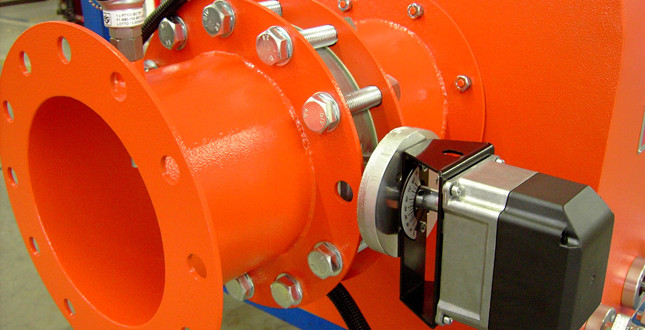

Phil Pett, Technical Sales Manager at EOGB Energy Products, looks at the pros and cons of the flue gas recirculation technique in heating systems and its effectiveness in reducing NOx emissions
With the recent focus on cutting down NOx emissions produced by road vehicles, companies across a wide range of sectors are now prioritising reducing their overall emissions.
Flue gas recirculation (FGR) can be a highly effective technique for lowering NOx emissions from burners in certain applications, as well as being relatively inexpensive to apply. It is widely predicted that recirculating up to 25% of the flue gases through the burner can lower NOx emissions by as much as 75%.
What is FGR?
Recirculation of the combustion products is a technique to reduce the flame temperature by using a percentage of the combustion products from the stack and piping them to dilute the combustion air.
This reduces the concentration of oxygen and increases the concentration of inerts (N2 and CO2), which in turn will absorb a part of the energy developed during combustion, thus reducing the flame temperature.
How does it work?
The simplest way is to use the combustion air fan on the burner to induce the flue gases from the stack and into a mixing port on the air inlet of the burner.
The second way is to use a separate fan (I.D or induced draft fan) to pull the flue gases from the stack and into the burner air inlet or, alternatively, into the burner throat. The fan can be fixed speed with a downstream damper or controlled by a variable speed drive.
An optimal design depends on a variety of factors and should be considered on an individual basis. However, the following should always be considered:
• The FGR piping and control systems allow the correct flow of flue gas under all operating conditions
• The system is able to turn down with the firing rate of the burner to avoid burner performance issues
• The system is designed to avoid condensate traps and to prevent exhaust gases escaping into the boiler room.
Disadvantages
Although there are many benefits, there can be some disadvantages of FGR. The first of which is reduced burner capacity.
If you replace some of the combustion air with low oxygen flue gases, the burner has to be downrated to compensate. This results in further capacity loss because the inlet air temperature to the burner is now elevated. This can often be countered by replacing the burner fan but again should be calculated on an individual basis.
The second disadvantage is the potential loss of flame stability and turndown. The benefit of slowing down combustion reactions is the reduction of NOx, but the down side can be higher emissions of carbon monoxide and unburned hydrocarbons. If not implemented correctly, combustion may be so severely affected that the flame will be unstable at specific points or in extreme cases across the entire firing range.
Is it worth considering?
Flue gas recirculation is becoming increasingly popular due to the growing focus on environmental issues. Today it represents the best compromise between costs and benefits, with a performance in terms of NOx reduction that is hard to reach with traditional burners.
The cost of FGR system implementation is relatively low when compared with the other methods for NOx reduction, and can be installed on existing plants.
For more information on flue gas recirculation, visit www.eogb.co.uk/commercial-applications.
Phil Pett is Technical Sales Manager at EOGB Energy Products
If you'd like to keep up-to-date with the latest developments in the heating and plumbing industry, why not subscribe to our weekly newsletters? Just click the button below and you can ensure all the latest industry news and new product information lands in your inbox every week.